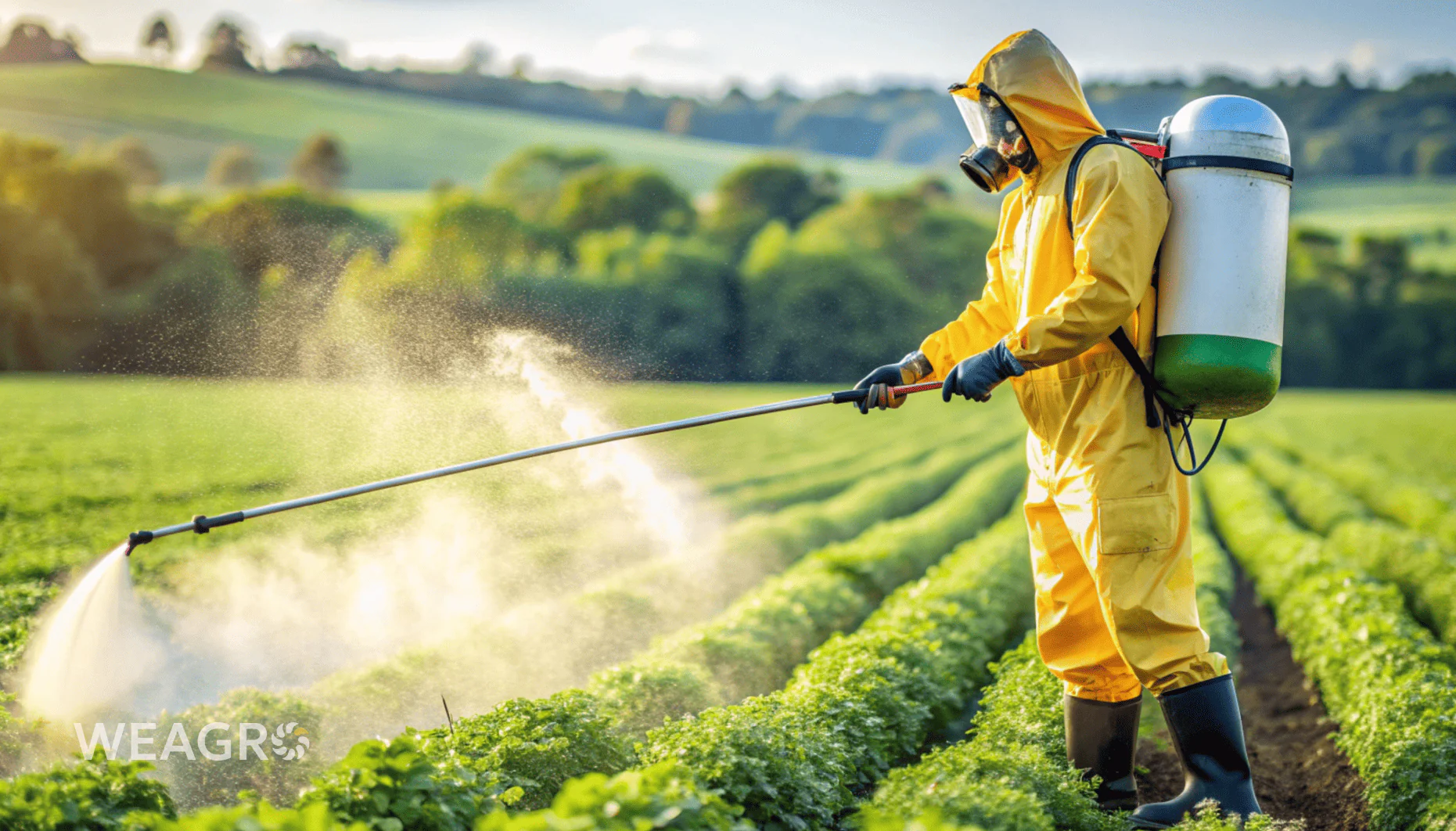Every farmer should know what seed germination is and why it’s important for proper crop planning and yield forecasting. Using quality seeds for sowing can increase the yield of wheat, corn, and sunflower by an average of 20%. What are the germination standards for different field crops and how is this indicator measured? What factors can reduce germination during sowing, and how to properly store seeds to maintain their high quality?
What is Seed Germination
Seed germination is the ability of seeds to sprout and produce new plants under appropriate conditions. It is one of the most important indicators of seed quality that affects crop yields.
Germination is tested on mature seeds under optimal conditions of moisture, temperature, sufficient light, and oxygen access. Seed germination is measured as the percentage of seeds that germinate within a specific period.
Why It’s Important to Test Seed Germination
For agriculture, it’s crucial to determine the germination rates of sowing material before planting, as they affect many factors:
- Seed quality. High seed germination is an indicator of healthy and mature seeds that contain sufficient nutrients and enzymes for successful sprouting. Testing allows filtering out substandard or old seeds.
- Planning of sowing operations. Knowing the germination percentage, farmers can accurately calculate the amount of seeds needed to sow a certain area. This helps avoid excess costs and ensure optimal sowing density.
- Ensuring uniform germination. Seeds with high germination rates sprout more evenly. This is especially important for mechanized harvesting, where growth uniformity affects process efficiency.
- Reducing crop failure risks. Insufficient germination can lead to significant crop losses.
- Product quality. Uniform and healthy plant growth ensures homogeneity and high quality of final products, such as grain, vegetables, or fruits.
Knowing the seed germination level, farmers can maintain stability and predictability in agricultural production, forecast results, and use water, fertilizers, and other resources more efficiently.
How to Test Seed Germination
There are several methods for testing seed germination, which are applied depending on the seed type and available resources.
Laboratory germination is determined under controlled laboratory conditions. The purpose of this type of testing is to create ideal conditions for seed germination, allowing assessment of its potential growth ability. Under laboratory conditions, optimal conditions for seed germination are created, after which the percentage of germinated seeds is calculated.
Field germination is determined directly in the conditions where the seeds will be grown. This type of germination is important for understanding how seeds will behave in real conditions.
Types of Seed Germination
Laboratory seed germination testing methods include:
- Moist paper method. This involves taking a sheet of moist filter paper or gauze and placing a certain number of seeds on it, usually 50 or 100 seeds. The seeds are covered with another moist sheet and placed in a plastic container to maintain moisture. It is placed in a warm location with optimal temperature for that seed type’s germination. The seeds are checked daily, recording the number of germinated seeds.
- Petri dish method. Follows the same algorithm, but uses a Petri dish as the container, which is covered with a lid to maintain moisture.
- Soil method. This process simulates natural germination conditions. Sterile soil is placed in small containers or pots where seeds are sown. The containers are watered and covered with film or glass and placed in a warm location with access to light. After a certain period, the number of germinated seeds is determined.
Field germination testing is conducted through control sowing. This involves sowing seeds directly in field conditions. A certain amount of seeds is sown in a small plot. The plot is carefully maintained, with optimal moisture levels and temperature. After germination, the number of sprouted seeds is counted and the germination percentage is determined. Field germination is evaluated under various conditions, allowing conclusions about seed adaptation to different conditions.
Seed Germination Table
Seed germination is an important indicator of sowing material quality, therefore it is regulated by state standards.
This seed germination table will help orient you in the germination requirements for different field crops.
| Crop | Germination standard (%) | Average germination time (days) |
| Wheat | 85-95 | 7-10 |
| Corn | 90-95 | 5-7 |
| Sunflower | 80-90 | 7-12 |
| Barley | 85-95 | 5-8 |
| Oats | 80-90 | 7-10 |
| Buckwheat | 75-85 | 5-10 |
| Soybean | 85-95 | 7-14 |
Seed Germination: Formula
The formula helps determine seed germination, allowing precise evaluation of the percentage of germinated seeds:
Seed germination = number of all seeds sown for testing X number of germinated seeds / 100.
Let’s look at an example for better understanding. Suppose 100 wheat seeds were taken for testing. After conducting all necessary procedures, 85 seeds germinated. Then the formula for measuring field germination would be: 100 x 85 / 100 = 85.
The wheat seed germination in this example is 85%.
How to Take a Sample for Analysis
For proper germination determination, it’s important to follow a specific algorithm when taking samples to ensure accuracy and truthfulness of analysis results:
- Sample selection. Seed germination testing begins with selecting a sufficient sample size to ensure statistical significance of results. It’s recommended to take samples from the total mass.
- Equipment and materials preparation. To avoid sample contamination, ensure that equipment (such as containers, measuring tools) and materials (paper, gauze, moist sheets) are clean and suitable for analysis.
- Sample storage. The sample should be stored in clean, dry conditions (containers or plastic bags) to avoid contamination or quality loss.
- Sample labeling. For sample identification during analysis, create a label with information about collection date, seed type, and any other important data.
- Laboratory delivery. If the seed sample is analyzed in a laboratory, ensure that the sample is delivered on time and under specified conditions to ensure accuracy of analysis results.
- Results interpretation. After analysis completion, the obtained results will be interpreted and displayed as seed germination percentages.
Following this algorithm allows for accurate and truthful seed germination testing, which is important for successful plant growing and obtaining high yields.
Sowing: Factors Affecting Seed Germination
During sowing, it’s important to maintain conditions that will help seeds effectively germinate in a certain period. Seed germination is preserved through:
- Treatment and coating of seeds with special organic preparations can improve their resistance to negative factors and increase germination.
- Soil temperature and moisture. Optimal conditions for seed germination affect germination timing and create favorable conditions for sprouting. These vary for different crops, for example, corn germinates at 10-12 degrees, wheat at 5-7 degrees.
- Sowing depth. Optimal sowing depth depends on seed size, large seeds (like beans) require greater sowing depth than small ones (carrots).
- Sowing density. Appropriate amount of seeds per unit area allows achieving optimal density. Excessive dense sowing leads to competition between plants and reduces germination.
- Sowing timing. Properly chosen sowing times depend on climatic conditions and crop type, affecting seed germination.
- Soil preparation. The field should have loose structure and necessary levels of nitrogen, phosphorus, and potassium to facilitate seed germination.
Read also: How to Determine Soil Acidity and How to Lower or Increase It
To ensure high seed germination and obtain maximum yield, it’s important to consider all these aspects and follow recommendations for sowing and seed treatment.
The online service WEAGRO allows farmers to buy seeds with deferred payment, without collateral, bureaucracy, and on the day of registration, using digital signature among other features. Our online service works with thoroughly verified suppliers who provide high-quality sowing material. The installment agreement is concluded for 3-9 months with payment schedules convenient for the buyer.
How to Store Seeds to Maintain Their Germination
Seed storage is a key stage in ensuring high germination and viability. Field germination can decrease with improper storage. Maintaining optimal storage conditions affects the duration of preservation and future seed use efficiency.
Seeds should be stored in a cool, dry, and well-ventilated facility. Storing seeds in a separate facility helps prevent external factors like high humidity or temperature fluctuations.
Optimal storage temperature depends on seed type, but generally should be between 5-10°C. Low temperatures slow down seed aging processes and reduce the risk of germination loss.
Air humidity in the seed storage facility should not exceed 50-60%. High levels can lead to mold contamination.
Special containers or packaging that protect against insect access should be used. It’s also important to regularly check seeds for pests.
Seeds should be protected from direct sunlight, as UV rays can negatively affect germination timing.
It’s also important to remember that seeds naturally begin to lose their viability and germination over time due to aging processes. Seed stocks should be regularly renewed and used before reaching the recommended storage period.
Conclusion
Seed germination is a critically important indicator for planning sowings and forecasting yields. Germination testing helps filter out substandard seeds, plan sowing operations, ensure uniform sprouting, reduce crop failure risks, and improve product quality. It’s important to properly store seeds, ensuring cool, dry, and well-ventilated conditions to maintain their viability. Using fresh seeds and regular germination testing is key to successful agricultural production.
The online service WEAGRO offers farmers convenient conditions for purchasing seeds with deferred payment, promoting efficient agricultural business operations. By joining our service, farming enterprises can receive quick agricultural installment plans for purchasing sowing material. We feature reliable agricultural product sellers with good reputations who offer seeds with high germination rates that meet all requirements and standards.









